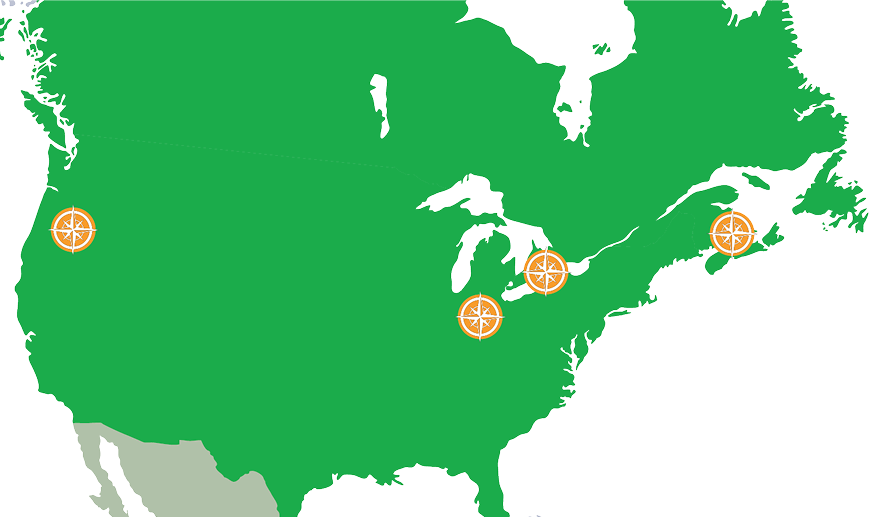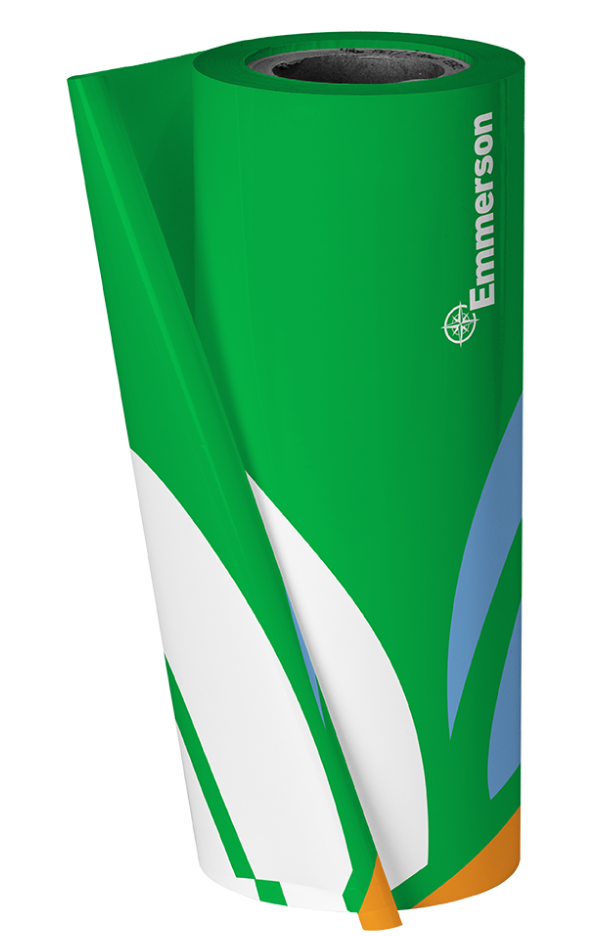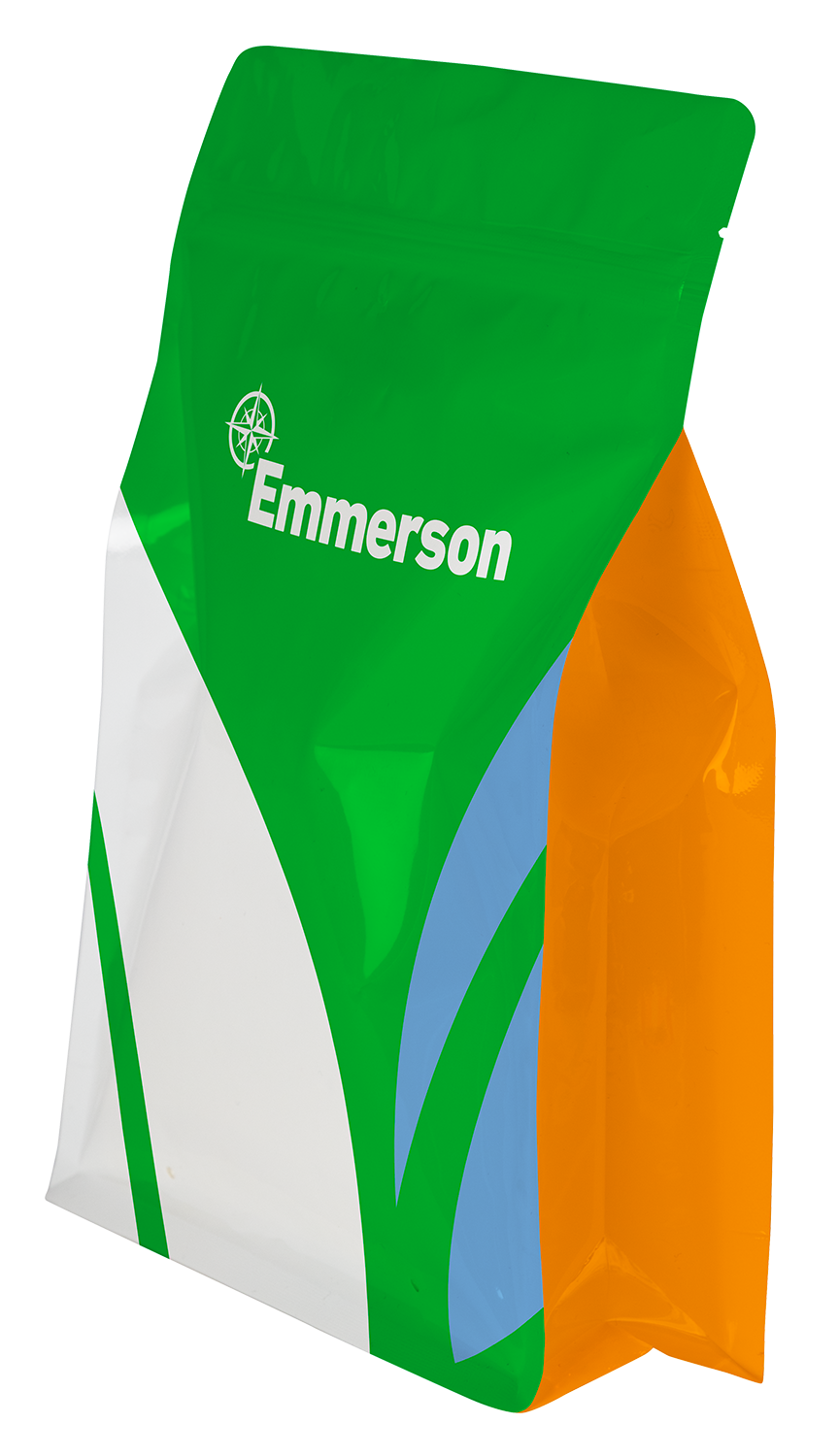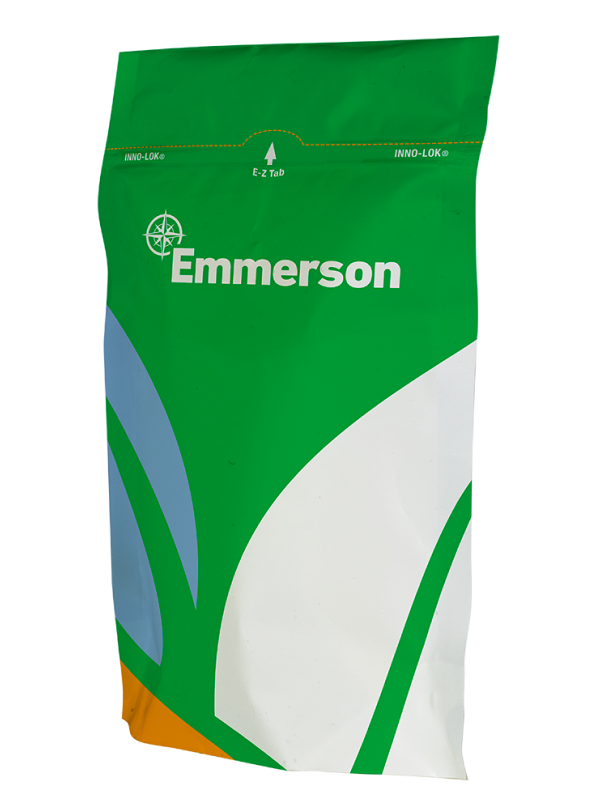Get in touch with a packaging expert.
Interested in learning how we can help you achieve your goals? Contact one of our packaging experts by filling out the form below. We look forward to hearing about your project.
Your inventory. Your area.
We have warehouses located in:
Oregon
Indiana
Ontario
Nova Scotia

General Information
Learn more about our geographic reach, facilities, and commitment to reliable delivery across North America.
- What locations does Emmerson Packaging service?
We service all of Canada and the United States. We have warehouses strategically located throughout to ensure that from coast to coast, your product is always close.
- How many office locations do you have and what does each facility offer?
We have two office locations and multiple warehouses located strategically across North America. Our Amherst, NS location is our headquarters where all of our extrusion, printing, and lamination occurs and is where our RD, Graphics, Project Central, and Customer Service teams are located. Our Belleville, ON location is our Converting center where all our closures are applied and pre-made pouches are produced.
- What is your on-time delivery rate?
We boast a 98+% on-time delivery rate. We’re so confident in our ability to deliver your project on time, we offer a rock-solid New Product Launch Guarantee. If you miss a launch date and it’s our fault, we’ll pay a penalty fee!
Packaging & Printing Capabilities
Discover the materials, technologies, and services we offer to bring your packaging vision to life.
- Do you make your own film?
Yes, we make our own polyethylene films. You can choose from clear, white, or add visual impact from our line of matte finish PE films.
- Do you do HD printing?
Yes, our HD printing provides 4000 DPI resolution (in comparison to traditional 2400 DPI). Our capabilities also offer up to 175 LPI for superior ink lay down and color control, in comparison to traditional pre-press technologies.
- Do you do digital printing?
Emmerson Packaging does not currently offer digital printing. As a flexible packaging manufacturer that focuses on pet food and frozen food, we feel that conventional flexographic printing is still the best solution for our customers, given their existing volumes and service requirements. We are actively exploring digital technologies and will deploy them when we feel they can meet our customers’ needs for quality and cost competitiveness.
- How can I understand the best packaging options to meet my goals?
We have Research and Development and Graphics teams that will work with you to understand and provide technical expertise, along with concept and design support to ensure that your goals are met. Complete our contact us form to coordinate a meeting today!
Lead Times & Minimum Orders
Understand our typical production timelines and order requirements to help plan your project efficiently.
- What are your standard lead times?
Lead times are based on where the product is being shipped to, but typically on repeat orders, standard have-ready lead times are:
- Surface print rollstock – 4 weeks
- Lamination rollstock – 5 weeks
- Bottom gusset pouches – 6 weeks
- Box pouch and quad seals – 7 weeks
We will be happy to work with you to meet your lead time needs. At Emmerson Packaging, we understand the importance of hitting your launch dates. That’s why we offer rock-solid on-time guarantee — if you miss a launch date and it’s our fault, we’ll pay a penalty fee.
- What is your minimum order quantity?
Our minimum order quantities per product type are typically (but may vary depending on the specifications of your item):
- Rollstock and Pouches – 25,000 PC per SKU
- Box Pouches – 30,000 pc per family, 10,000 PC per SKU
- Quad bags – 10,000 per SKU per order.
As we are strategically set up to manufacture large-scale orders, most quotes start with the following annual impressions, but our experts can discuss this more with you:
- Pet food – 1 million
- Frozen food rollstock – 10 million
- Frozen food pouches – 5 million
- Towel and tissue – 10 million
Sustainability & Materials
Explore how our eco-conscious practices and innovative materials support your sustainability goals.
- What sets Emmerson Packaging apart from other manufacturers in terms of sustainability?
- We have been producing sustainable, recycle-ready stand-up pouches since 2019
- We offer a team of dedicated sustainable packaging R&D experts to ensure that you can meet your packaging goals.
- Beyond packaging innovations, our manufacturing facilities have long concentrated on sustainability initiatives, and we are SQF level 2 Certified.
- We were the first flexographic printer in North America to adopt ISO 14001 in order to guide the creation of our environmental management system.
- We were also the first Sustainable Green Printer (SGP) in Canada and the 6th in the US.
- Our products are peanut free – and we have complete product traceability!
- What do I need to know about PCR?
- PCR materials come from plastic products that have been recycled, collected, cleaned, reprocessed into PCR resin, and then made into something new. An example of products that are used to create PCR resin would be HDPE, milk jugs.
- PCR provides excellent packaging sustainability benefits, but they may impact print quality and/or film consistency. If the package is a lamination of two substrates, the PCR can be added to the substrate that is not being printed, and the print will not be compromised. However, if the specification is one substrate and not laminated, the PCR film may impact the graphics. One of the compromises of PCR is the presence of gels or unmelts which are areas that do not melt uniformly. They will show up as small hard spots. These gels will affect print as the ink will pool around the hard spots.
- Emmerson Packaging offers 15 – 25% content. Although 100% PCR packaging is available, the resin does not melt uniformly. As a result, there can be unmelts and gels present, which are small un-melted areas in the sealant film. To minimize this impact, we advise limiting the amount of PCR in the product.
Certifications & Safety
See how our food-grade certifications and quality standards ensure safe, reliable packaging every time.
- Is Emmerson Packaging food grade?
Yes. All our packaging is FDA-approved, and our facilities are SQF Edition 8: Level 2 certified. You can access a copy of our most up to date SQF certifications here:


